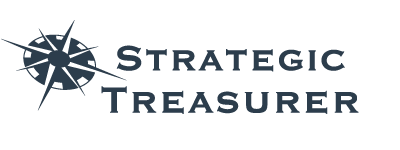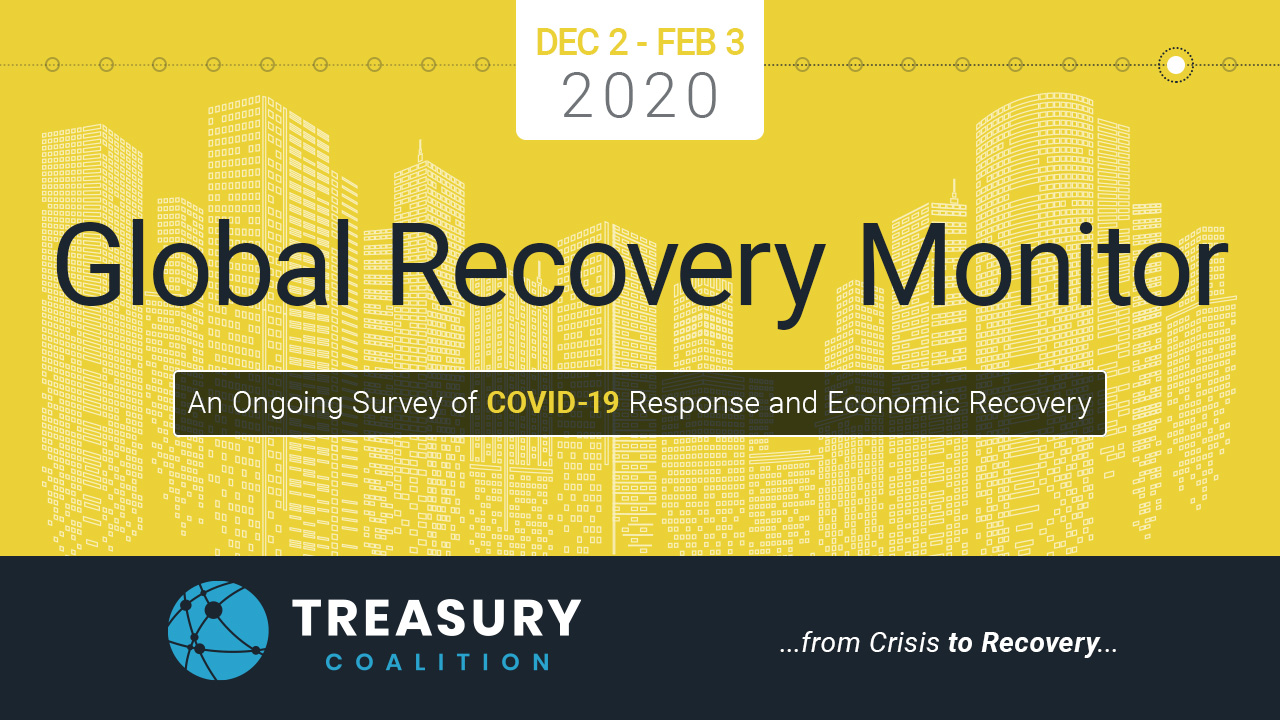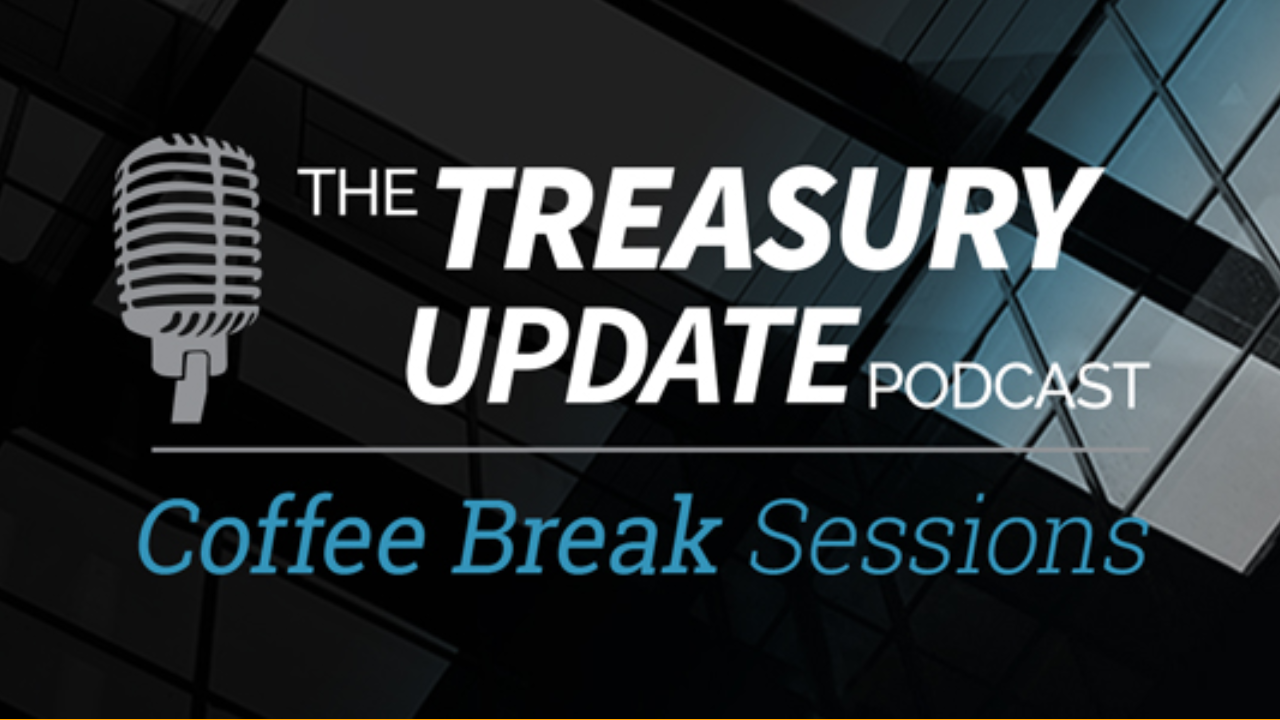
Session 29
Coffee Break Session:
What Is a Payment Hub?
What is a payment hub? Coffee Break Session Host Alexa Cook catches up with Craig Jeffery, Managing Partner of Strategic Treasurer, to discuss what treasurers need to know about payment hubs. They cover what payment hubs are, how they differ from other technologies, and some of the ways treasury can benefit from using them. Listen in and learn a little bit about payment hubs.
Host:
Alexa Cook, Strategic Treasurer


Speaker:
Craig Jeffery, Strategic Treasurer


Episode Transcription - CBS Episode 29: What is a Payment Hub
Alexa Cook:
Hey, guys, welcome to The Treasury Update Podcast: Coffee Break Session. The show where we cover foundational treasury topics and questions in about the same amount of time it takes you to drink your coffee. Hi, everyone, welcome back to The Treasury Update Podcast: Coffee Break Sessions. This is your host Alexa Cook, and I’m joined again by Craig Jeffrey, Managing Partner at Strategic Treasurer. Welcome back, Craig.
Craig Jeffery:
Hi, Alexa.
Alexa Cook:
Thanks for joining us today. So, today we’re going to be covering what is a payment hub? So, Craig, what is a payment hub? Do you want to give us maybe just a high level overview of what a payment hub is?
Craig Jeffery:
Sure. A payment hub is the system that can format payments and ensure that the controls are in place and it will deliver those to either the different networks like SWIFT or directly to financial institutions for the creation and delivery of those payments, whether it’s ACH, EFT, wire transfers, et cetera.
Alexa Cook:
Okay. So, the way you just described that made me think a little bit of a treasury aggregator. How are these payment hubs differing from a treasury aggregator?
Craig Jeffery:
Now, that’s a good question. So, the treasury aggregator is the term we use that encompasses services that include both payment hub functionality as well as information aggregation. So a treasury aggregator has the payment hub capabilities that I talked about. It will create payments in any format and deliver them through any channel.
Craig Jeffery:
So, you might use that on the outbound side for payments originating from your ERP system or systems, perhaps even from your treasury management system, other payables oriented system. So it handle validating, sanction filters, payment information, put things in the right format, deliver it, manage the confirmation processes, et cetera. So, that’s part of it. That’s the payment hub part of it.
Craig Jeffery:
On the information consolidation or information aggregation part, that would be a system that goes and retrieves information from let’s say, for example, banks, numerous banks, balanced reporting information prior day and current day in various formats, from direct connections through different types of networks like Ebix or SWIFT takes that information, reformats it if necessary and then delivers it to the backend systems of a company.
Craig Jeffery:
So it could be to a treasury management system, could be to an ERP, it could be to a reconciliation platform and also drop information off into a data lake for use with the BI tool. So, it’s aggregating, it’s acting as a single pipe, like you might have electricity come into your house through the switch. And same thing with water, water comes in and it’s distributed to the house through pipes. It’s that main switch for inbound information and outbound payments.
Alexa Cook:
Okay. That makes sense. My next question was can treasury aggregators have payment hubs? But really the way you just explained that answers that and the answer is yes.
Craig Jeffery:
Yeah. I mean, we would say it’s inherent, to be a treasury aggregator you have to have payment hub functionality and information aggregation capability. There’s another term there too, I know we talked about it a little bit earlier, was payment factory. So make sure I don’t forget to say something about that.
Alexa Cook:
I guess we could just jump to that next. So what is a payment factory?
Craig Jeffery:
Yeah, so sometimes there’s a minority of people that refer to payment factories as payment hubs. I mean, they think of them as the same exact thing. And there are some materials out there that confuses the two. And I guess we would say that a payment hub is as I described it. A payment factory would be the systems and the organization that support payments. So if you have a shared service center or the new cool term is a center of excellence that does payments, that might be a payment factory. They make payments, they use systems and they have people that manage the process. So the factory includes the people and the payment hub is the tech for the outbound side.
Alexa Cook:
So what are some of the benefits of a payment hub?
Craig Jeffery:
Part of that’s, if you have a number of systems that are making payments, every time a new format comes up, a new payment type comes up, there’s certainly been a lot of new payment types that come up, every time there’s new requirements for validating sanctioned parties or checking to confirm that you’re sending it to the right person, you’re going to connect to SWIFT or what have you. Each of those connections requires changes to underlying systems.
Craig Jeffery:
And if you only have one system that’s making payments, a payment hub is not really in your purview. But if you have a lot of payment systems, so many organizations that are growing there, that could be a half a billion dollars in annual turnover to multiple billions of dollars. They may have five, 10, 15, 50, or 100 different systems that are making payments every time a format changes that may impact five or 10 or 15 different platforms.
Craig Jeffery:
And so, a payment hub acts as that translator of you wouldn’t have to make as many changes to these five underlying systems when a change is required, you can make those changes through the payment hub. And it’s pretty easy to see how quickly those changes would stack up on all the systems across the organization. And in light of how much it’s changing, formats, regulations, different types of requirements, concerns about fraud. And so, this is a huge benefit, because it reduces complexity and it helps you have a consistent process and it improves control. So it helps you with that flexibility and scalability side, as well as control efficiency.
Alexa Cook:
That makes sense. So then what are some of the challenges with it?
Craig Jeffery:
Yeah, so the challenge of the payment hub are, if you’re trying to bring it into too small of an organization, it might be more than you need if you only have to make, let’s say, you’re only cutting ACH payments and your system supports that, why would you stick another system in the middle of that? So, that can be a challenge, you bring it in when your organization is too small and there’s no complexity.
Craig Jeffery:
The other challenge is, it’s theoretically one more piece in the puzzle, and usually when people realize they have a need for a payment hub, they already have 10 or 20 connections between a system and a bank or a network. And so, they already have made the decision every time there’s an issue. They say, “I’m going to get another line in, another FTP connection. I’ll work out the arrangements. I’ll do the test, and I’ll get it in place. It’s a little bit more work to get a payment hub in and we need to get this new payment set up.”
Craig Jeffery:
So they set it up individually. So each is a separate line run, on a home run basis from the system to the bank for example. It takes a little more work to be more efficient. But when you look at an environment of why does someone have 20 phones on their desks to call 20 banks with payment information, theoretically, the FTP connections, formats, when they can have one that allows you to do all of them, it allows you to see through, there’s a lot more efficiency for organizations that change quite a bit, have new banks, they’re acquiring. So organizations that are dynamic and have reached a certain level of complexity tend to benefit greatly from it.
Alexa Cook:
That does make sense and I like that analogy that you used with the phones. So I think we’re just at about time. So I’m going to do a quick recap of everything that we’ve covered. What is a payment hub? This is really a system that can format payments and ensure that controls are in place. And this can either deliver the payments to networks or financial institutions. And these do differ from a treasury aggregator. So, as we said, treasury aggregators can be payment hubs and information aggregation. So, treasury aggregators, I’m sorry, payment hubs can be more, can do more, which would include sanction filters and that sort of thing, or put different payments into the right formats or those different files. And then treasury aggregators can include payment hubs, so they’re going to have, again, the payment functionality and the information aggregation.
Alexa Cook:
And then a payment factory is also a different, it’s not a payment hub. So, there’s going to be a payment hub, a payment factory, and a treasury aggregator. So, the difference of a payment factory is that this is going to be systems plus the organization. So the factory is going to include the extra level of the people in the organization.
Alexa Cook:
And then some of the benefits that a payment hub is going to have is that all of the systems that are using the payment hub, or if there’s a format change coming up, the connection is going to change a lot more simply and smoothly, because they’re all streamlined through the one connection. And then some of the challenges that this could bring is it could be too big for a small organization and just more than what you need. And then theoretically, this could just be one more piece to the puzzle. But it really could be just a little bit more work needed to make everything more efficient.
Craig Jeffery:
I think you did a great job of organizing the various words I threw out there into an understandable process and description. Thank you.
Alexa Cook:
Yeah. Well, thanks for joining us today, Craig. And to all of our listeners, make sure you join back every first and third Thursday of the month. And as always, if you have any questions, comments, feedback, or just want to reach out, we can be reached at podcast@strategictreasurer.com. Thanks again, Craig.
OUTRO:
This podcast is provided for informational purposes only and statements made by Strategic Treasurer, LLC on this podcast are not intended as legal, business, consulting, or tax advice. For more information visit and bookmark strategictreasurer.com.
Global Recovery Monitor
Join Strategic Treasurer and the Treasury Coalition as we track the impact of COVID-19 and the subsequential events on the treasury industry. Complete the 5-minute survey and receive the results report before it is publicly released!
Coffee Break Sessions – A Treasury Update Podcast Series
A part of the Treasury Update Podcast, Coffee Break Sessions are 6-12 minute bite-size episodes covering foundational topics and core treasury issues in about the same amount of time it takes you to drink your coffee. The show episodes are released every first and third Thursday of the month with Special Host and Treasury Consultant Alexa Cook of Strategic Treasurer.




